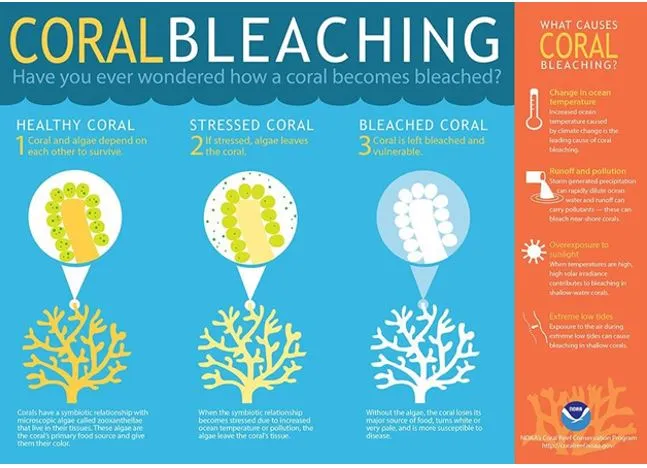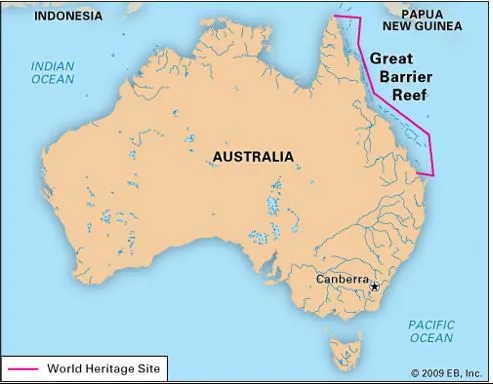

28th June 2024 (15 Topics)
Context
The worst mass coral bleaching event in the world's largest reef system has decimated at least 97% of the coral at Australia's Lizard Island within three months, as revealed by a recent drone analysis. This event highlights the severe impact of rising sea temperatures on coral reefs globally.
Impact of Rising Sea Temperatures on Coral Reefs
- Introduction to the Issue: Lizard Island, located in the north of the Great Barrier Reef, has experienced catastrophic coral bleaching, with high-resolution drone images showing a 97% decline in coral health between March and June 2024.
- Global Coral Bleaching Trends: According to the National Oceanic and Atmospheric Administration (NOAA), over 70.7% of coral reefs worldwide have been affected by bleaching-level heat stress since January 2023, surpassing all previous global mass bleaching events.
- Scientific Observations: Researchers from various institutions used drone imagery to quantitatively assess the extent of coral bleaching and death, with nearly all corals on Lizard Island succumbing to the event.
Consequences and Concerns for Coral Ecosystems
- Widespread Impact: Aerial surveys indicate that almost one-third of the Great Barrier Reef experienced 'very high' and 'extreme' levels of coral bleaching last summer, highlighting the widespread impact of rising sea temperatures.
- Mechanism of Bleaching: Coral bleaching occurs when corals expel algae from their tissues in response to extreme heat stress, causing them to appear white and become vulnerable to diseases. While some corals can recover when temperatures decrease, many die immediately or due to prolonged stress.
- Quantitative Assessment: The drone imagery provided the first quantitative assessment of coral deaths from the recent mass bleaching event, revealing a peak mortality rate of 97% in June.
Responses and Future Actions
- International Concerns: The United Nations Educational, Scientific and Cultural Organization (UNESCO) has expressed deep concern about the mass coral bleaching and has urged the Australian government to make the data on coral deaths public.
- Research and Monitoring: The Australian Institute of Marine Science is expected to release its annual report on coral reef conditions, which will provide further insights into the health of the Great Barrier Reef.
- Temperature Monitoring: Current sea surface temperatures across the Reef are slightly below the threshold that typically causes heat stress to corals, but they remain about 0.7°C above the June average, indicating ongoing environmental challenges.
Coral reefs
|
Great Barrier Reef:
|
UPSC Mains Questions
Q. Evaluate the global implications of mass coral bleaching events and the role of international organizations in addressing these environmental crises. What strategies should be adopted at the global level to protect coral reefs?
More Articles





